Introduction to Corner Clamps for Woodworking
Corner clamps for woodworking are indispensable in achieving clean, precise right angles in various projects. They are crucial for ensuring your workpieces align perfectly when forming corners, making them a favorite among both amateurs and professionals. This guide will explore the types, uses, and benefits of corner clamps, enhancing your understanding and techniques in woodworking.
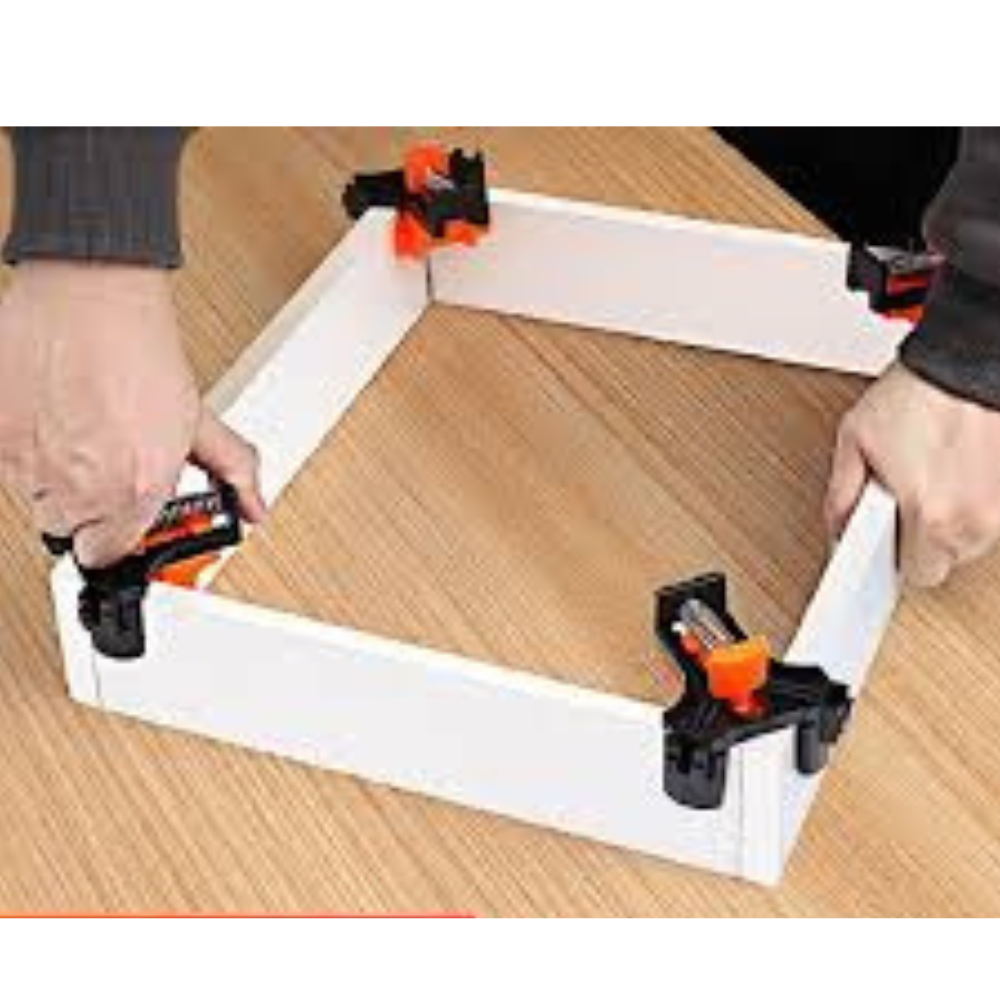
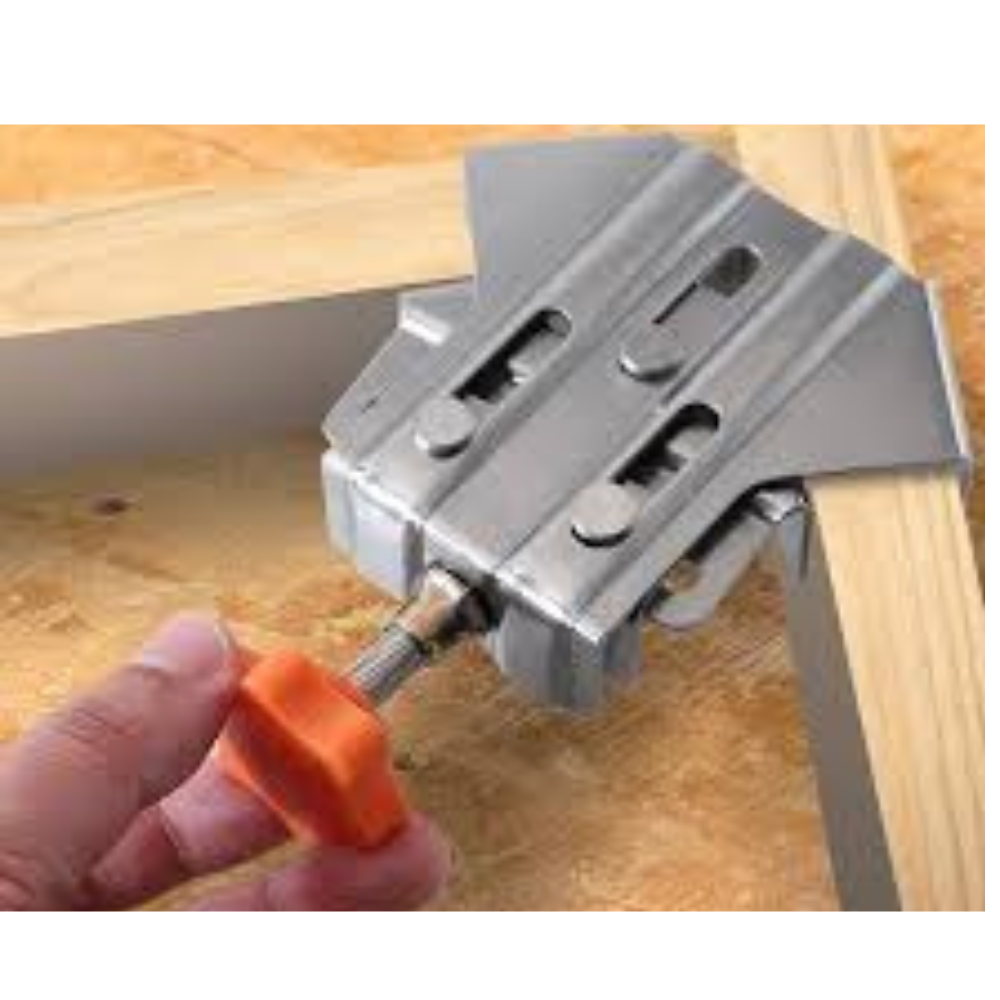
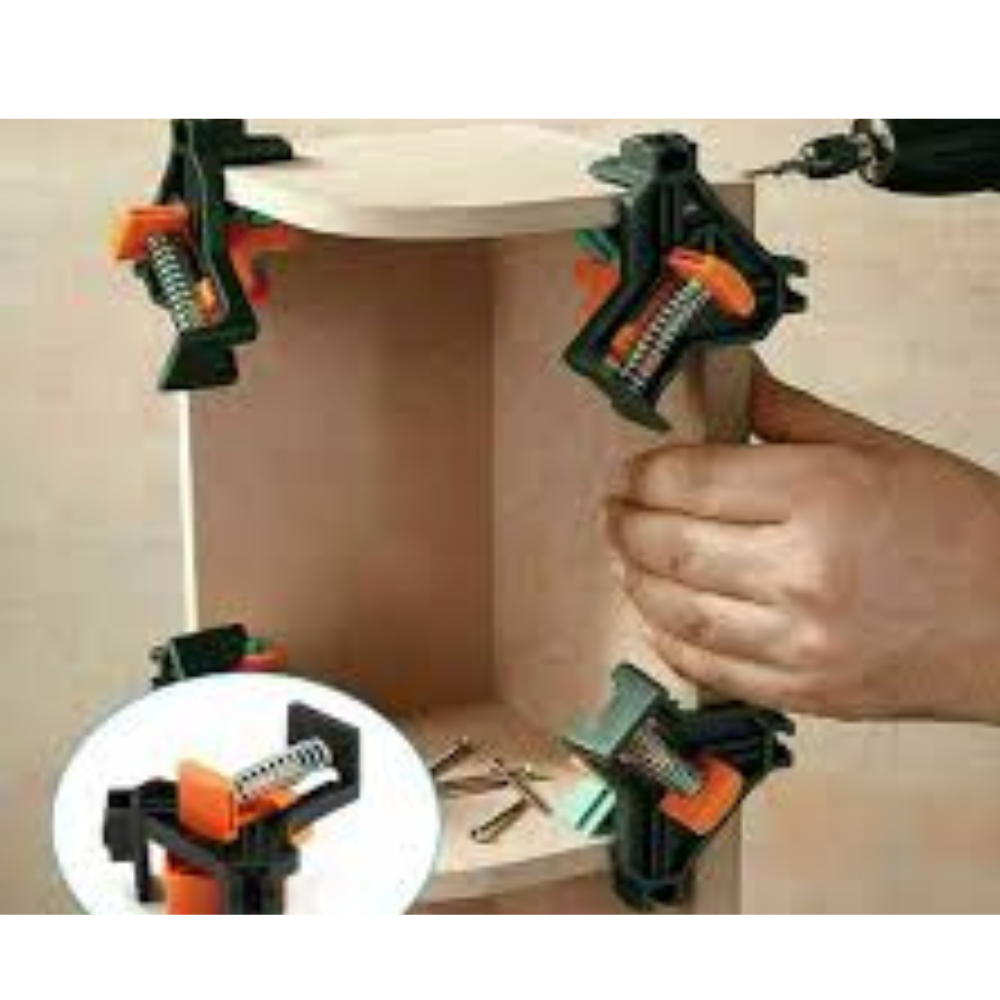
For your “Free” Guide to 13 Wood Joinery Types – Click Here.
What Are Corner Clamps?
Corner clamps, also known as right-angle clamps, are specialized tools designed to hold workpieces at a 90-degree angle. These clamps are fundamental for tasks requiring high precision, such as frame making, cabinet construction, and box assemblies.
Benefits of Using Corner Clamps
The main advantages of using corner clamps for include:
- Accuracy: They ensure corners meet precisely and are square.
- Efficiency: They speed up assembly time, allowing for faster project completion.
- Consistency: They help maintain uniformity in repetitive tasks, such as production runs in a professional workshop.
Types of Clamps
- Adjustable Corner Clamps: These clamps can be adjusted to handle various sizes of wood, making them highly versatile for different projects.
- Quick-Release Corner Clamps: Feature a mechanism that allows for fast adjustment, saving time and effort during repetitive tasks.
- 90-Degree Welding Clamps: Although primarily used in metalworking, these robust clamps are also excellent for heavy-duty woodworking.
Choosing the Right Corner Clamp
Selecting the appropriate corner clamp depends on:
- Material Compatibility: Ensure the clamp can handle the type of wood and finishes you work with.
- Clamping Capacity: Choose clamps that accommodate the thicknesses and widths of your materials.
- Durability: High-quality materials like cast iron or reinforced polymers offer longevity and stable performance.
How to Use Clamps Effectively
To maximize the benefits of corner clamps:
- Proper Alignment: Position the workpieces precisely within the clamps before tightening.
- Appropriate Pressure: Apply enough pressure to hold the pieces securely without distorting the wood.
- Surface Protection: Use soft pads to protect the wood from imprints or damage from the clamp.
Setting Up Your Workspace with Corner Clamps
Organizing your workspace can enhance your efficiency significantly. Keep corner clamps within easy reach and ensure your workbench allows for ample space to maneuver and adjust the clamps as needed.
For your “Free” Workspace Plans – Click Here.
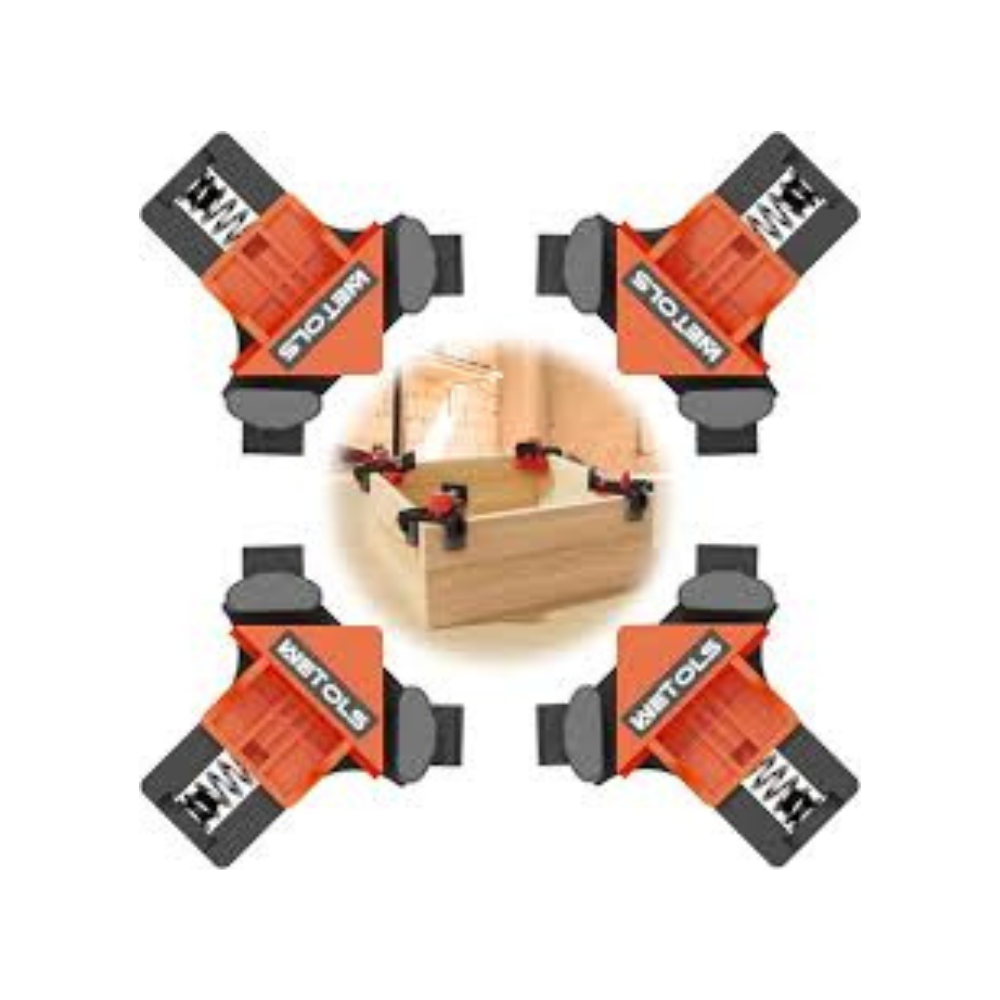
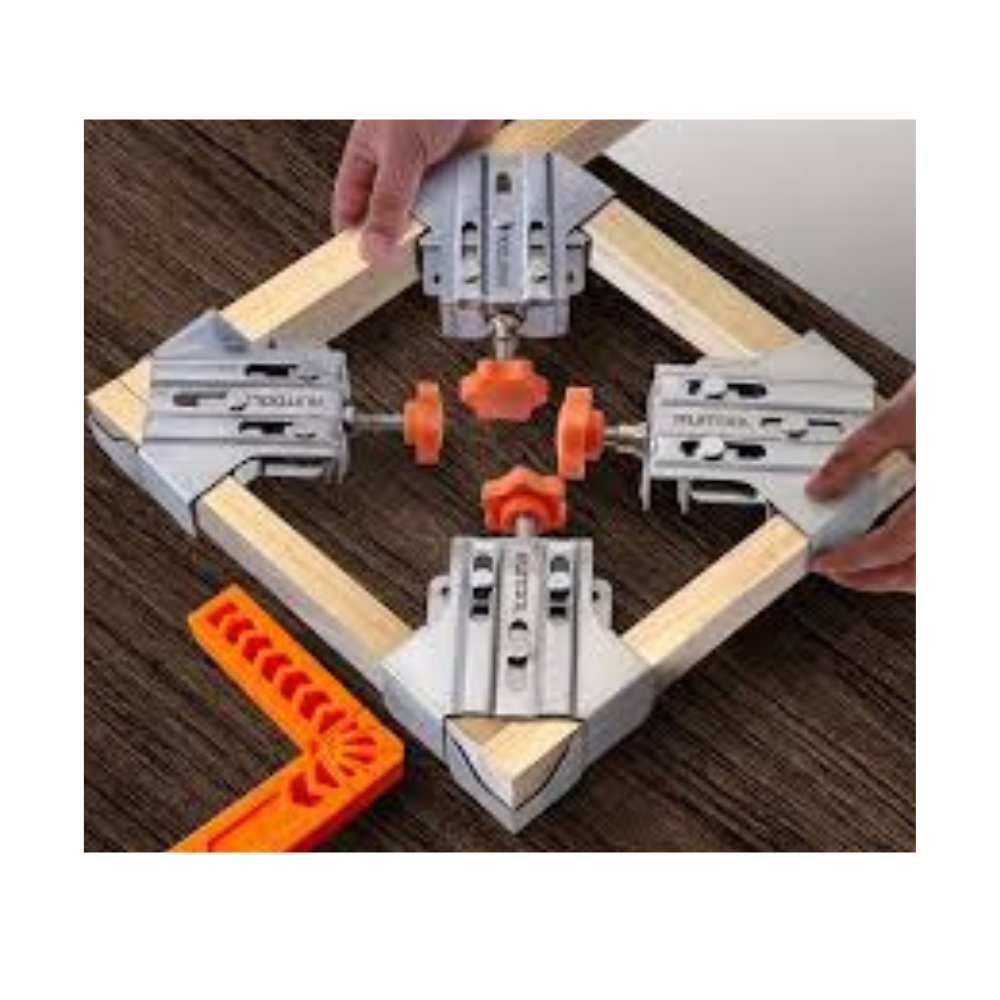
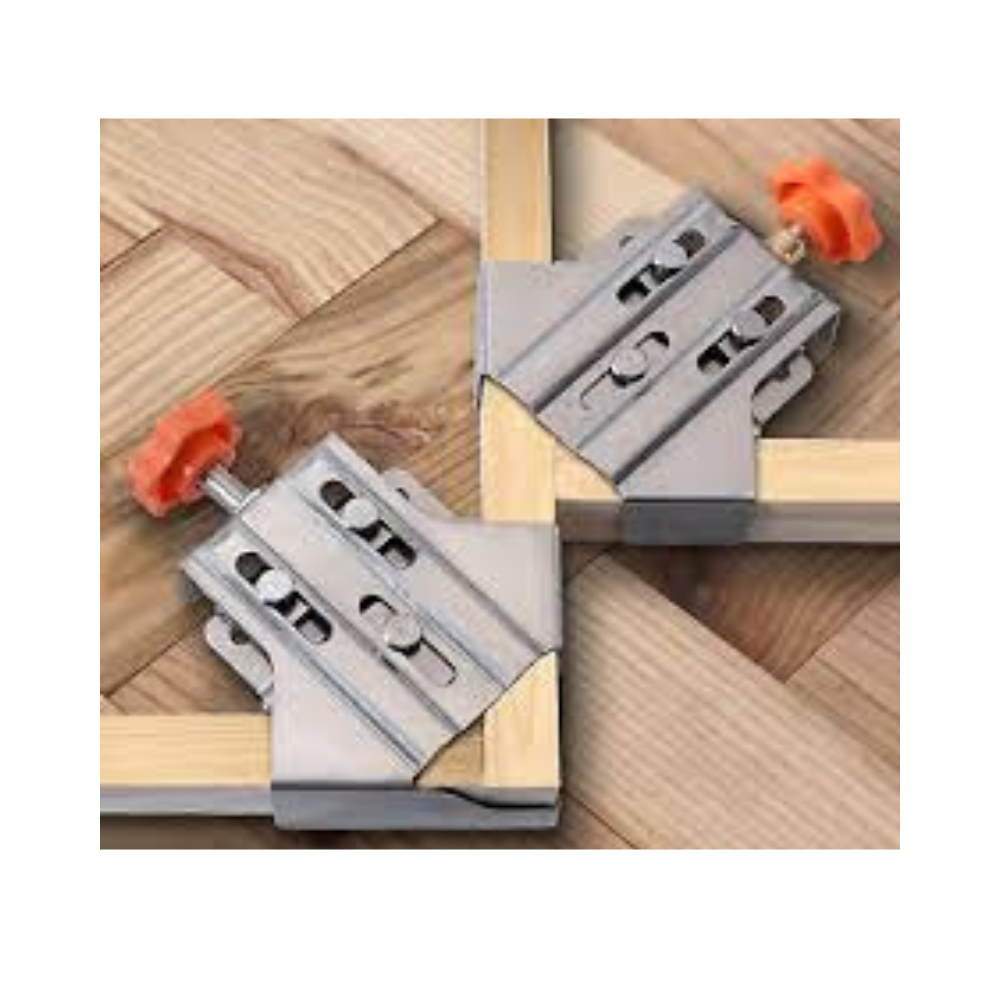
Common Mistakes to Avoid
- Over-tightening: This can deform the wood or even break the clamp.
- Misalignment: Double-check alignment before final tightening to avoid uneven joints.
- Ignoring Clamp Capacity: Do not force a clamp beyond its capacity, as this may compromise the clamp’s integrity and your project’s quality.
Maintenance Tips for Clamps
- Regular Cleaning: Dust and wood particles can accumulate in the clamps, affecting their operation. Clean them after each use.
- Lubrication: Apply lubricant to moving parts periodically to ensure smooth operation.
- Regular Inspections: Check for signs of wear or mechanical issues to address them before they affect your work.
Advanced Projects Using Corner Clamps
As you become more comfortable with basic projects, consider using corner clamps for more advanced applications like constructing multi-tiered shelving units or detailed furniture corners. These projects can benefit significantly from the precision that corner clamps provide.
Innovations in Corner Clamp Technology
The latest developments in corner clamp technology include adjustable pivot points and wider clamping surfaces, which cater to a broader range of project sizes and complexities. These innovations make corner clamps more adaptable and user-friendly.
DIY Tips for Homemade Corner Clamps
For woodworkers on a budget or needing a custom clamping solution, DIY corner clamps can be a viable option. You can create effective clamps with basic materials like plywood and screws, tailored to your specific project dimensions.
The Role of Corner Clamps in Professional Woodworking
In a professional setting, corner clamps are invaluable for ensuring consistent, high-quality outputs. They play a critical role in streamlining production processes, reducing manual labor, and enhancing overall work efficiency.
Summary: Mastering the Use of Corner Clamps in Woodworking
Corner clamps are more than just tools; they are essential partners in your woodworking endeavors. By ensuring precise angles and stable assembly, corner clamps help you achieve professional-level results in your projects.
For your “Free” 2 in 1 Folding Picnic Table Bench Plan – Click Here.
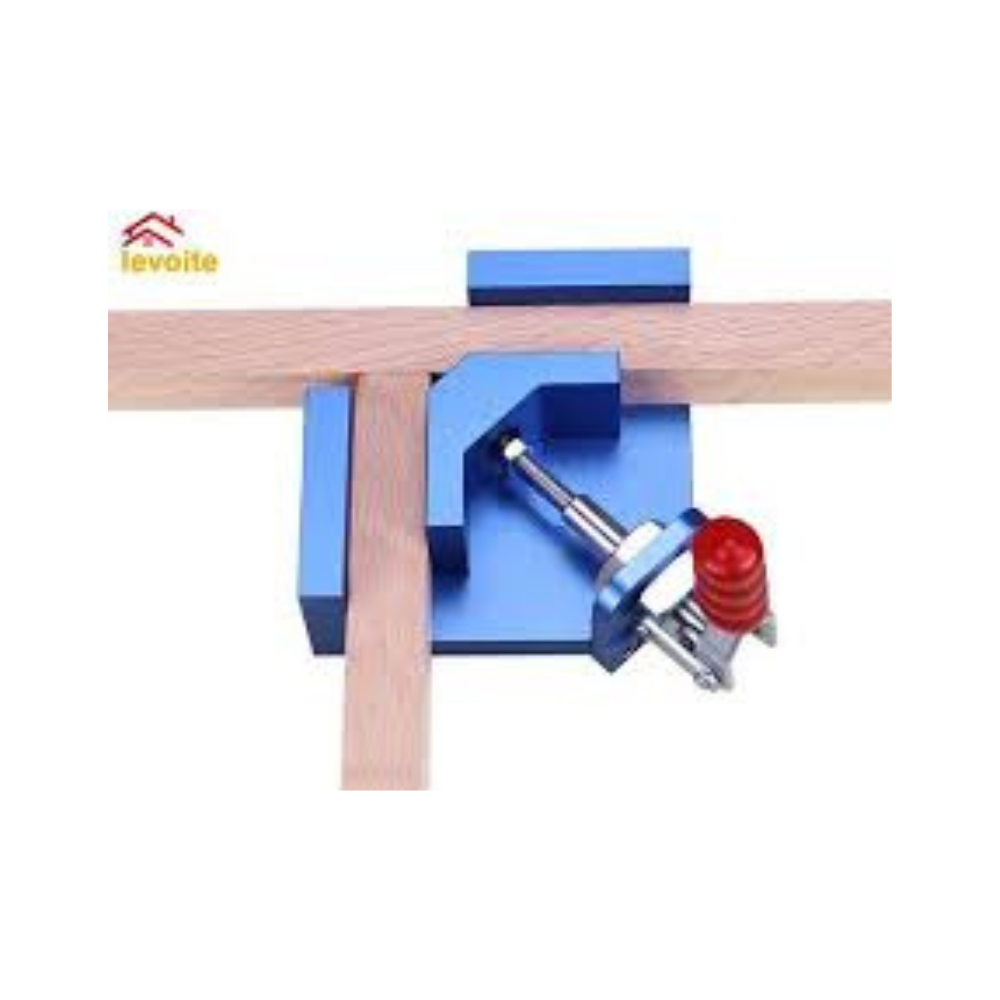
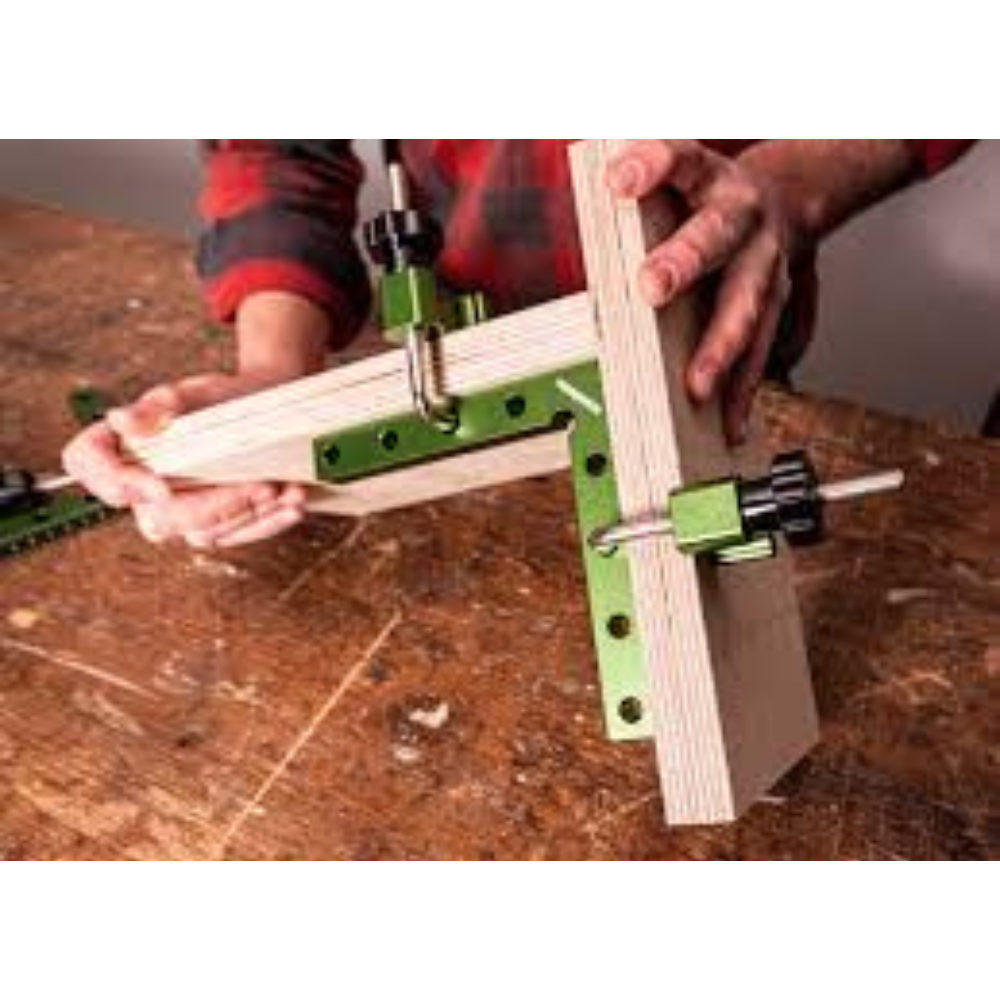
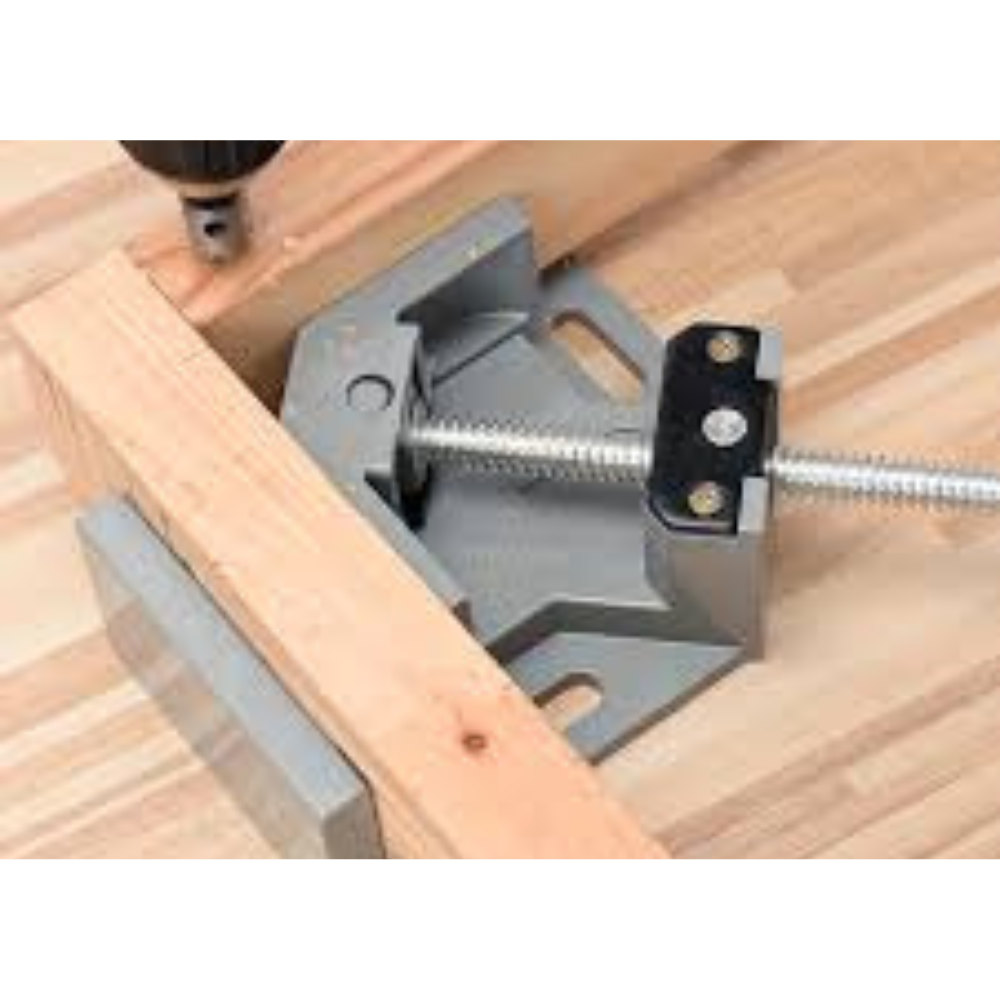
FAQs About Corner Clamps for Woodworking
- What materials are best for durable corner clamps? Steel and aluminum are top choices for durability and reliability, particularly under heavy use.
- Can corner clamps be used on materials other than wood? Yes, many corner clamps are versatile enough to be used with materials like metal and plastic, though it’s important to choose the right type for the material.
- How can I protect delicate surfaces from clamp marks? Using rubber or silicone pads can prevent damage and protect the finish of your workpieces.
- Are there corner clamps suitable for very large woodworking projects? Yes, some clamps are designed with extendable arms or modular designs that can be adjusted for larger scale projects.
- What’s the best way to store corner clamps to prevent damage? Hanging them on a dedicated rack or storing them in a drawer with padded dividers can prevent physical damage and keep them in good working order.
By integrating corner clamps into your woodworking practice, you ensure each project benefits from precise alignment and tight, secure construction. This comprehensive guide equips you with the knowledge to choose, use, and maintain corner clamps, enhancing both your efficiency and the quality of your work.
